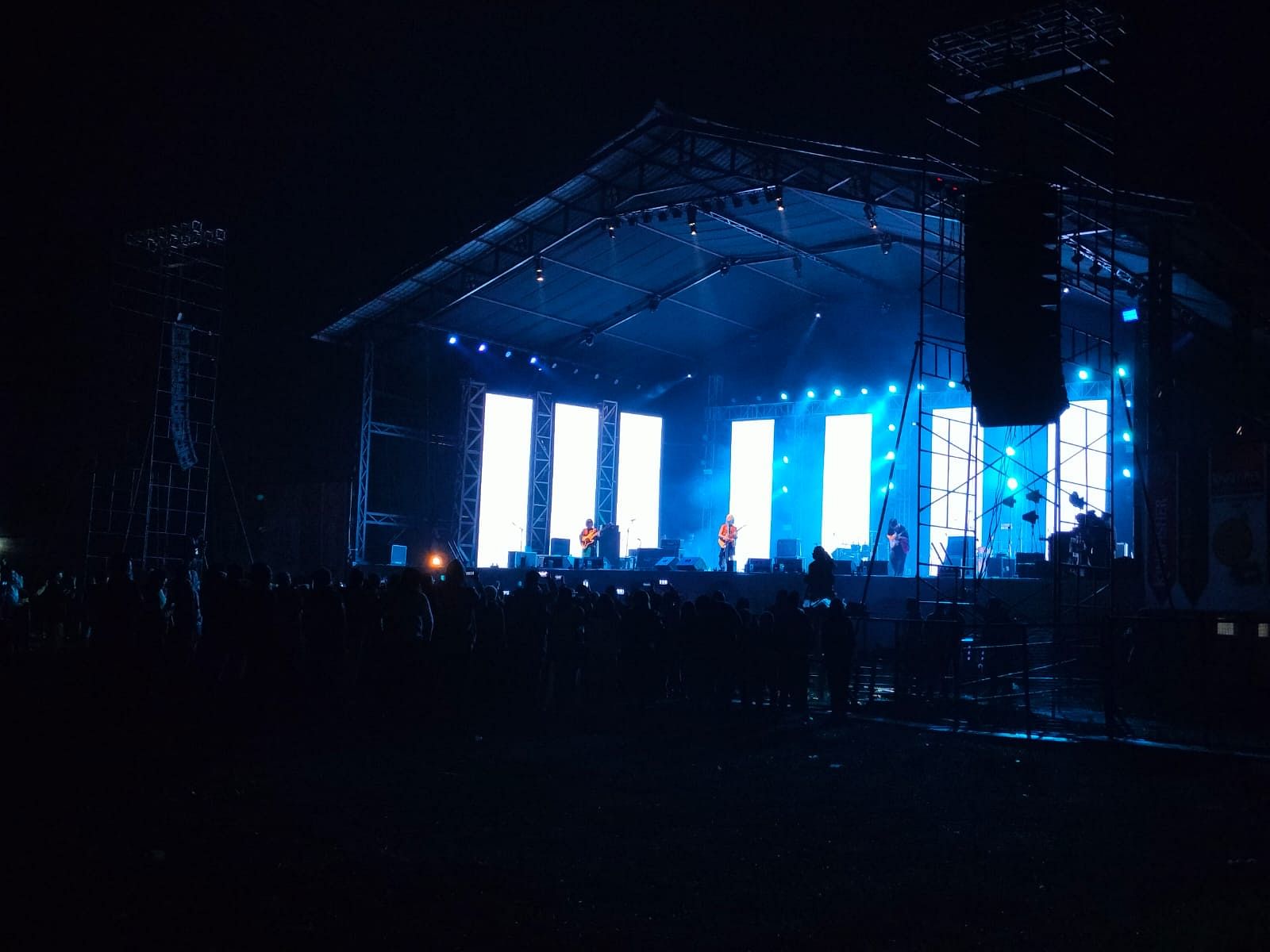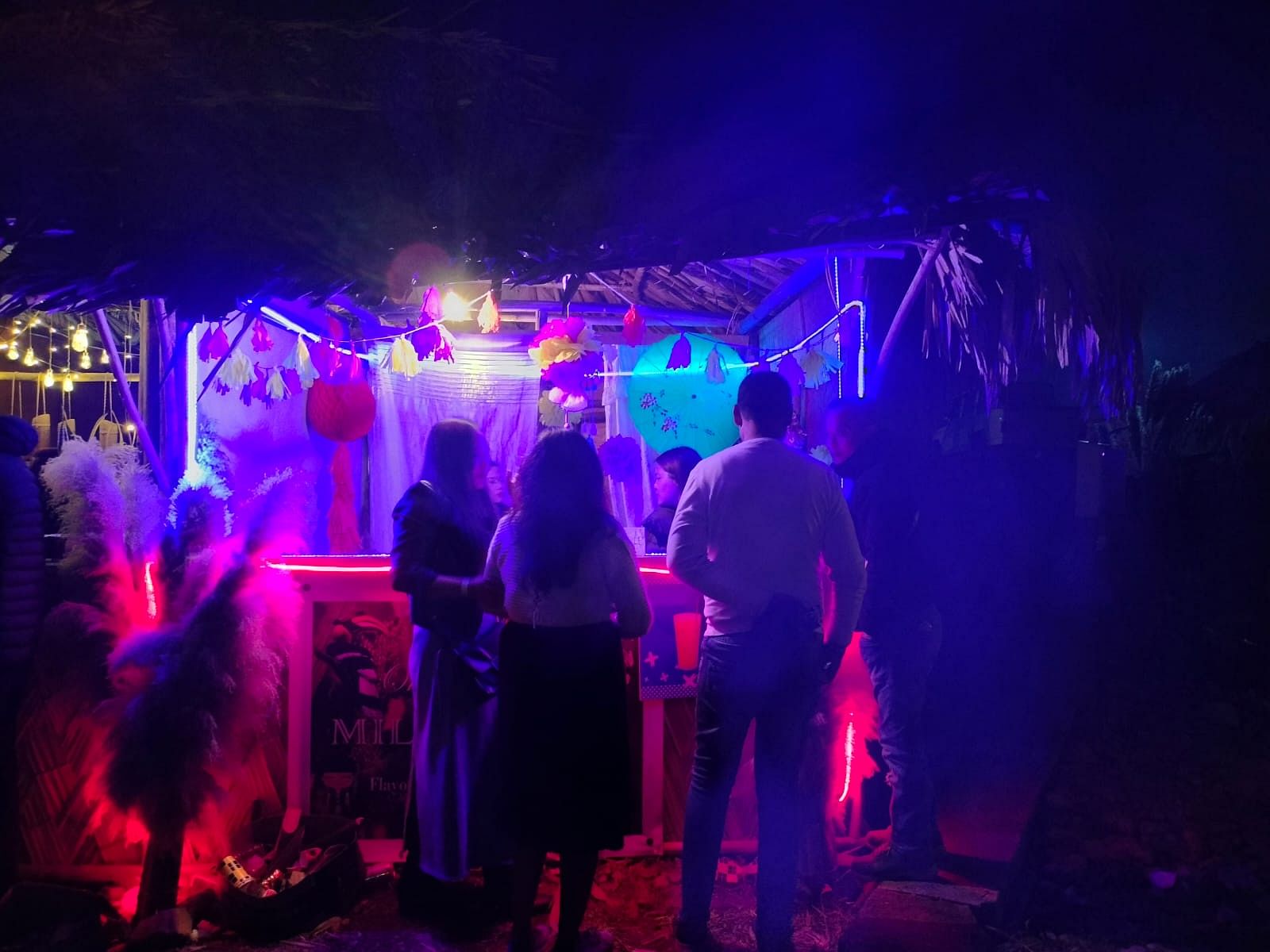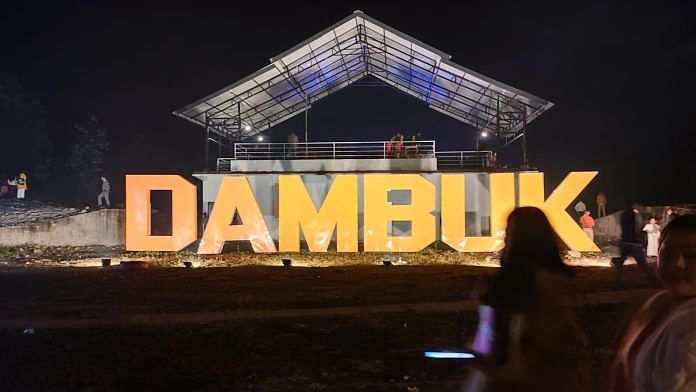Dambuk: Fourteen-year-olds headbanging to punk gold Muslim Dudes on Bikes, grown men chanting the name of the band P.O.D, and girls screeching to get singer Dobom Doji’s attention–Arunachal Pradesh’s Orange Festival of Adventure and Music was a loud and heady four-day party.
Over the past six years, Dambuk’s annual music festival has earned a name for its genre-bending lineup of artistes. From nu metal, hardcore punk, indie pop, soul, funk, EDM, progressive black metal, psychedelic, and reggae, to post, math, and folk rock, the 2023 edition only honoured that tag. And the crowd, mostly drunk on vibes and rice beer, lapped it up.
There is a new music war in the Northeast — Ziro vs OFAM. And everybody has an opinion and picked a side. Founded in 2012, the Ziro Festival of Music, too, is held annually in the state’s Ziro Valley and supported by the government. In the past, it has featured big names like Lee Ranaldo, Steve Shelley, and Damo Suzuki. Now, it has competition.
“Ziro Festival is the pioneer and it has done a lot for the economy of Ziro. But it doesn’t offer the kind of bands Orange has,” said Abu Tayeng, Secretary of Sports and Youth Affairs, who is the brains behind OFAM.
For a valley town populated with the Adi tribe, known for cultivating ginger, maize, mustard, and palm oil, the past six years of the music festival have made the world smaller.
The festival venue, a massive amphitheatre with an underground green room, was grand enough to host an international music festival. Neon lights, vertical screens, and fire and smoke shows added to its grandeur and allowed the audience to stay glued to the performers like a curious cat to a laser pointer. It was a scene straight out of the 2012 Tom Cruise-starrer Rock of Ages.

Also read: Naga mom’s K-skincare wave swept India. Her Beauty Barn now competes with Nykaa, Amazon
The party scene
Dambuk ended the first day of the festival dancing to Bombay Vikings’ Hawa Mein Udati Jaaye and Woh Chali Woh Chali. The nostalgia of indie pop songs held everyone captive—from politicians, school kids, YouTubers, and musicians to those ziplining right above the concert ground. On the second day, the same crowd was seen grooving to progressive black metal band Lunatic Fringe and Shillong-based jazz and blues experts Lil Mama Tips and The Mama’s Bois. In the end, everyone had their hands up in the air, with Ritviz mixing up tunes on the stage.
But when the party is over, the glamour and glitz wear off. During the off-season, Dambuk is left largely unattended and unvisited. It goes back to being a sleepy town with some raging youngsters in a few corners. Dambuk isn’t Goa yet.
OFAM and Ziro have accomplished one thing, though: The local talent has new aspirations of going big and the indigenous lifestyle of Arunachal Pradesh and the Northeast as a whole is now being more openly explored.
“What makes OFAM and its diverse lineup different from other music festivals is that you don’t have to listen to only rock, metal bands, or electronic acts in a day. If there is an EDM headliner, there will be a rock band at the start. This way, people who are here to listen to rock are also trying out another genre they would usually not listen to,” said Debo.
Debo is the founding member of a band named DokoDoko, which describes its genre as ‘bipolar’.
The band’s lead vocalist, Kritika, is a PhD scholar and former professor who quit her job a year ago to make music that defies more genres than it adheres to. One look at her wouldn’t tell you that the petite woman, wearing practical-looking spectacles and a velvet gown with a leather jacket on top, commands her band’s rhythm with her big voice. OFAM gave her a chance to perform on the same stage as her childhood icon, Leslie Lewis.
“Leslie Lewis has been there since most of us couldn’t even wipe our butts, so watching his act here was a lot of fun,” she said.
Lewis wasn’t the only senior artiste attracting diehard fans from across the country to Dambuk. British reggae DJ Apache Indian and San Diego-based nu-metal band P.O.D. had the crowd thronging around.
P.O.D.’s lead vocalist Sonny Sandoval dropped the beat with every hair on his body. The microphone was flying in the air, and he was completely in control. The audience sang in unison, with its fists up: “We are, we are, youth of the nation.” The crowd came alive.
“It’s the feel of their music. I have been listening to P.O.D. since I was in Class VIII. All my friends still gather at my place and we sing along to the band’s songs,” said 34-year-old Guwahati-based musician and freelance videographer Chiranjib Deka, who brought Assamese gamosa for P.O.D. members. Deka had a jaw-drop moment when Sandoval showed up on stage wearing the same gamosa. “Did anyone take a video? Did you take a video? Anyone?” Deka frantically asked everyone around later on.
For those who move around the country to attend music festivals, OFAM came as a surprise because of its humble size and groundbreaking range of offerings.
“I felt so warm at OFAM; it was my first time and it’s amazing how they have been able to pull something that diverse in Dambuk. It makes sense for Ziro to have 40 bands as it is a large-scale festival, but OFAM covered a wide range with just 20 acts,” said Abraham, a 23-year-old graduate.
OFAM 2023 was made for music fanatics like Deka. Popular folk rock band, Dobom Doji Collective, performed for two days because the crowd couldn’t get enough of them. Lead vocalist Doji’s dark long hair and his hit Galo folk number Jimi Ane made both men and women jump in exhilaration.
Moreover, OFAM never lost sight of local independent talents. Apart from Doji, singer and songwriter, Te Chi was another musical treasure warming up the crowd on a cold night. Then, the Itanagar-based girl dance group With Nine showed up in white and red to perform their award-winning K-pop act. Not to forget the Tripura-based Koloma, which opened the festival on 14 December before an energetic crowd.
Nobody made 12-year-old girls hoot and cry with joy like B-Boy Gom. The Street Classy Battle round on the festival’s last day was all about hip-hop, with lanky dancers shifting each bone in their bodies to catch the rhythm. Even toddlers in their parents’ arms managed a twerk or two.
“He [B-Boy Gom] is something else. Nobody can dance like him. It took us one hour to reach here, and our parents would get mad if we got late. But I won’t leave without watching him perform,” said 13-year-old Mumsha.
The last day of OFAM, which fell on a Sunday, saw the most diverse audience — with families attending with their pet dogs, friends huddled in groups. Most had arrived in the morning, lounging on bedsheets spread on the ground and drinking from bamboo bottles. Kids hugged strangers and dogs went nuts looking for their toys in the vast open ground of untrimmed grass.

Also read: Nagaland’s music goes beyond Hornbill. Its talent is market-ready for India’s 5-star hotels
Nothing will change
Not everyone had a ball at Dambuk. Some missed Bollywood and thought the tickets were too pricey–ranging between Rs 2,000 to Rs 3,500. Others weren’t too impressed with synth verses and guitar scores.
But the state government and OFAM organisers don’t want to change anything.
“I didn’t hear of math rock until we booked South Korean band Kotoba. We try to not do things that everyone expects from us. Commercially, it makes sense to bring in someone like Arijit Singh and a hundred thousand people would watch him. But we want to book independent artistes and we can’t keep everyone happy,” said Tayeng.
According to the sports secretary, the government gave Dambuk Rs 25 lakh this year, which barely covered the air ticket fare of the most expensive band that played at the festival. Most of the funding for the festival comes from sponsors such as JK Tyre, Kingfisher, and other food and beverage brands. The rest is dependent on those who rent stalls at the venue and buy tickets. In the festival season, the village economy thrives. Oranges are bought in bulk; tourist spots, campsites, resorts, and homestays get booked in full.
Tayeng isn’t worried about catering to local taste nor is he willing to bring down the price of tickets, the most important source of funding for the four-day extravaganza. Moreover, he wants to filter the crowd.
“Criticism for pricing is absurd because if you’re going to do public service, the event is going to fail. I could turn Orange Festival into a mela and book any artiste who costs peanuts, but would that be good? We also have to give a safe and comfortable space to our guests, we can’t let rogue people enter the venue and ruin their experience,” Tayeng added.
When the audience went silent during The Riot Peddlers’ performance, a Mumbai-based hardcore punk band, the bass guitarist tried jazzing up the scene with Shah Rukh Khan’s hit 1995 song Tujhe Dekha Toh Yeh Jana Sanam. But it wasn’t a tribute—when the guitar and drum picked up, the lead vocalist said, “I hate this song, it makes me sick.”
Organisers tried to commercialise the festival as little as possible. From offering drinks in sustainable bamboo tumblers to hosting independent artistes, the festival went local in various ways.
“OFAM is a niche, alternative, independent music-based festival. And it doesn’t make sense for people to travel all the way to Dambuk to listen to Bollywood. Kudos to the organisers for working so hard and making it such an amazing experience for us,” said Arun Singh Ravi, The Riot Peddlers’ lead vocalist.
Ravi would hear the same kind of pop music at every concert he would attend. He “really, really hated it” and decided to make music that was opposite to Indian pop. The Riot Peddlers have been making soundtracks for ‘resistance’ since 2010.
Ravi and his bandmates spent many nights at the Artist Village campsites along with other performers. Dambuk may compete with Ziro when it comes to music, its gliding roads, and the generous local community, but it doesn’t have luxury resorts and homestays to host everyone.
At the crack of dawn, volunteers and core members of the organising committee were out with their cellphones and fanny packs, running around and putting out fires. The roads are bracketed with tent spots, and the water dispensers are never empty. Every corner of the venue has washrooms, and bamboo dustbins are planted every 10 feet.
“We are so proud that this year, Dambuk has over 50 campsites to accommodate every visitor,” Chief Minister Pema Khandu announced on the inaugural day of the festival.
A regular OFAM visitor wakes up at 6 am and sleeps whenever the headliner—the last act of the day—decides. On Friday, the first day of the festival, it clocked 3 am when Bombay Vikings finished their set. Even the CM stuck around.
(Edited by Humra Laeeq)



